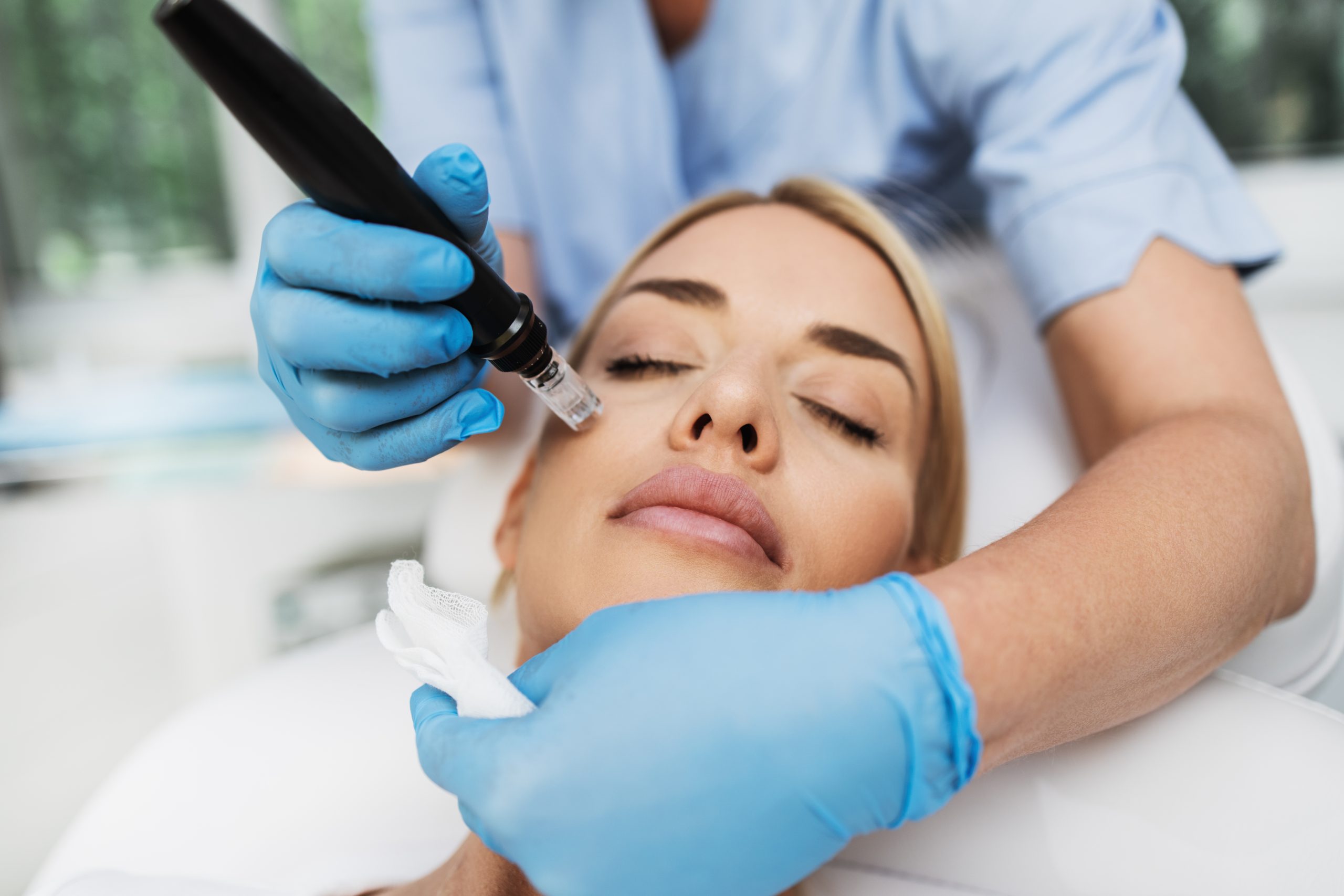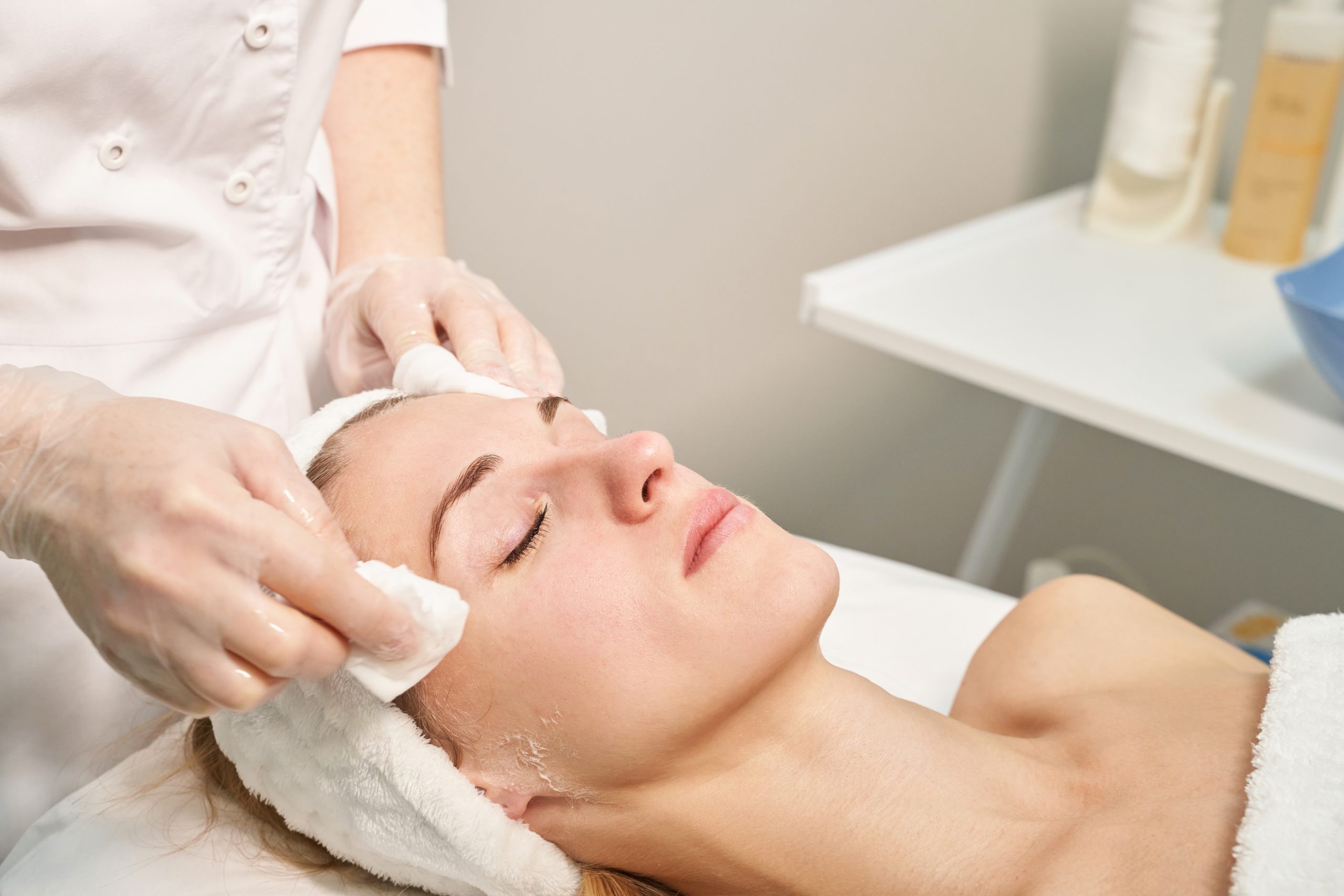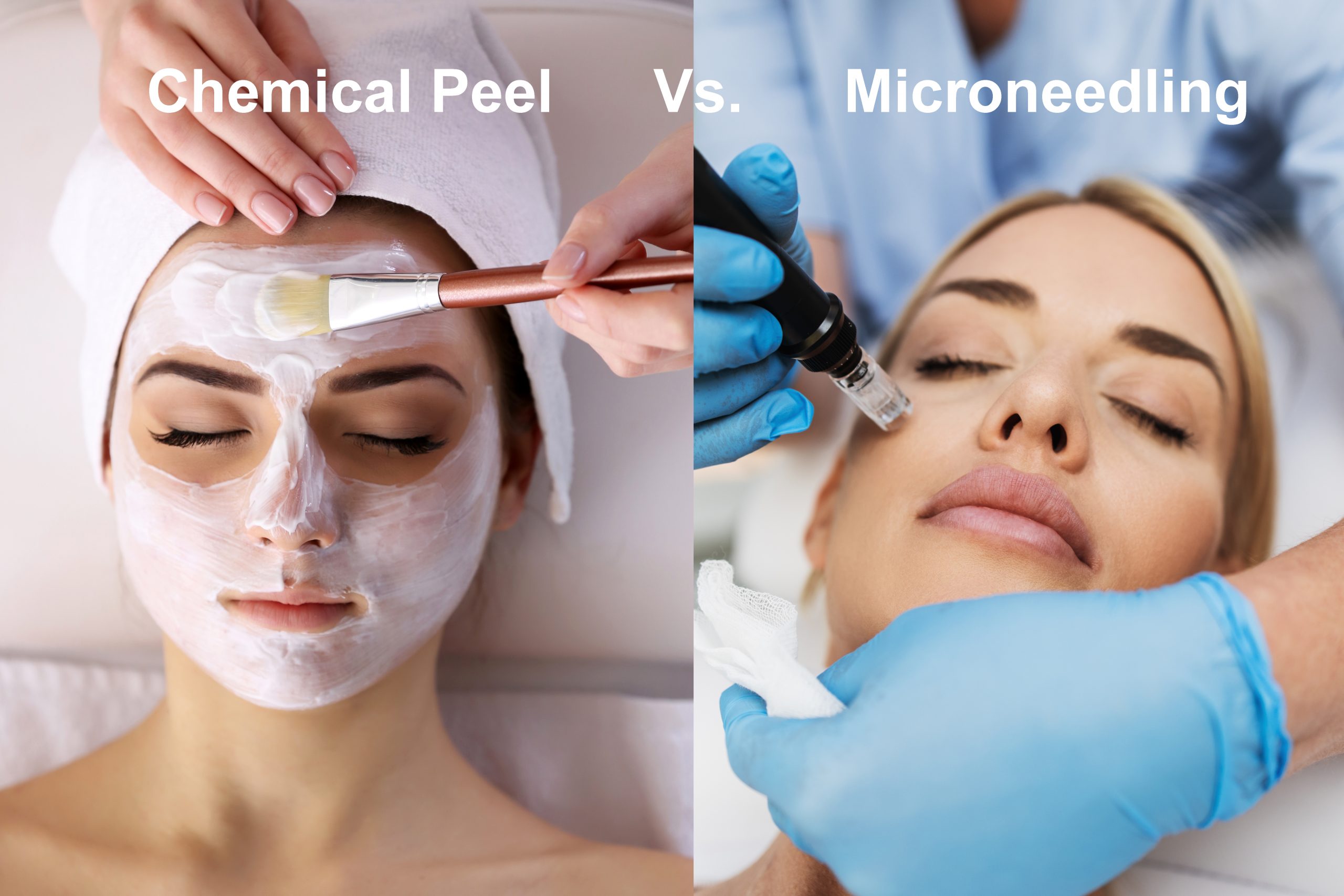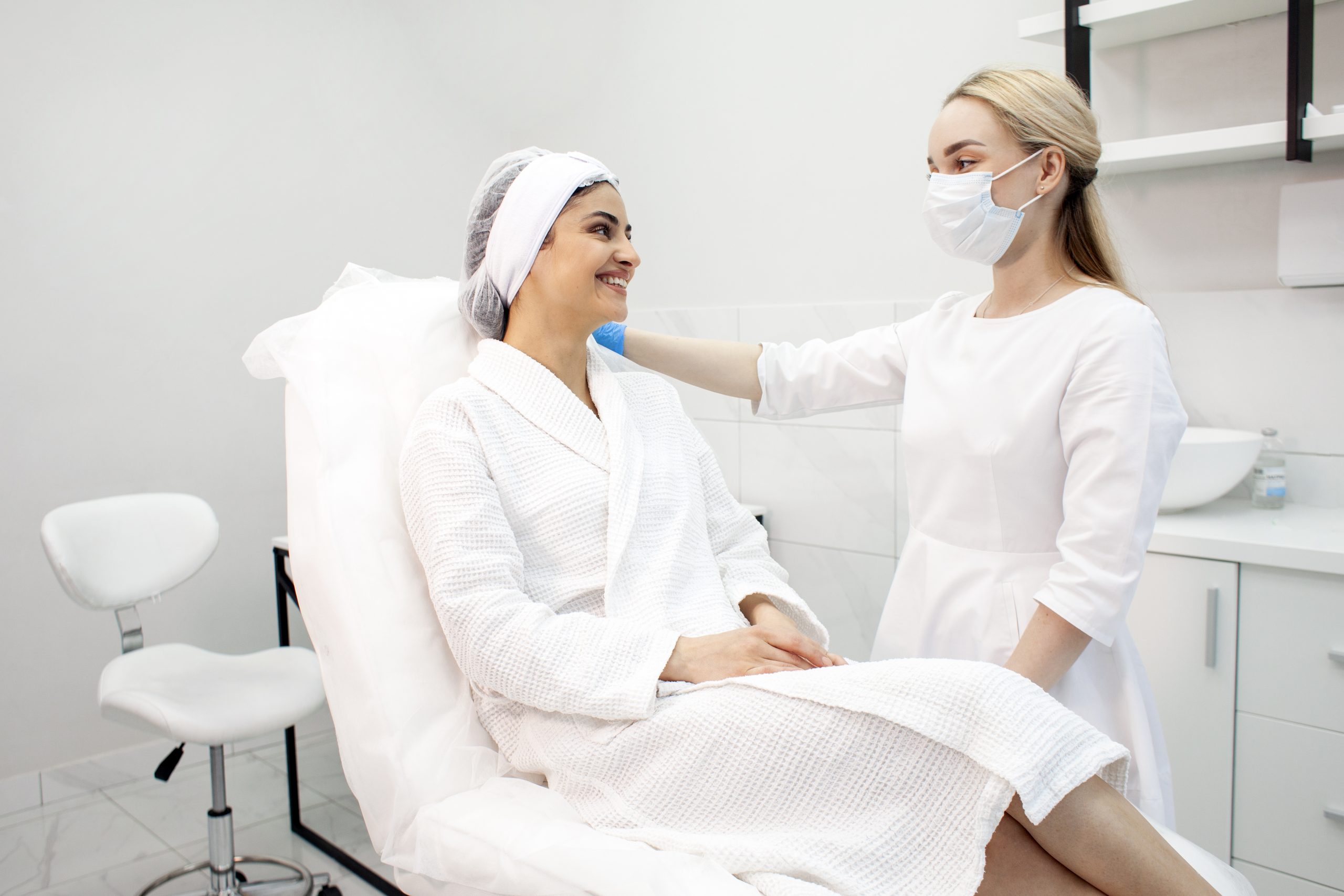Skincare concerns, whether they are acne scarring or signs of aging, should not be taken lightly. After all, these are issues that can affect your self-esteem in a way that can negatively impact your overall mental health. Fortunately, as advances in medical technology continue to improve, so do the treatments known for these common issues.
With that said, two of the most popular options for treating skin care concerns are microneedling and chemical peels. The following guide examines both skincare treatment methods to help you figure out which solution is the best for you.
What Is Microneedling?
Microneedling is a minimally-invasive treatment that uses tiny needles to create controlled microscopic channels in the skin. As a result, microscopic perforations are made in the top layer of the skin on a cellular level, which triggers your body’s natural healing process.
Here at Natural Skincare & Acne Clinic, we use DermaPen microneedling, one of the most advanced treatments.
How Microneedling Works
As your body begins healing the wounds created by the needles, the production of collagen and elastin increases as a result. These two proteins keep your skin firm, plump, and youthful. The body produces collagen and elastin naturally as part of its healing process, but this production slows down with age.
By stimulating the body’s natural healing response, microneedling can help boost collagen and elastin production, thereby helping diminish fine lines and wrinkles and the appearance of acne scarring.
Microneedling Benefits
The following are the benefits of microneedling:
- It can reduce the appearance of wrinkles, fine lines, and acne scarring.
- Reduces pore size, which can help decrease the chance of future breakouts.
- Stimulates collagen production, which can lead to firmer, more youthful-looking skin.
- It can be used on all skin colors and types (since there is no heat, unlike lasers).
Microneedling Drawbacks
Despite the many benefits, you should know a few potential drawbacks to microneedling. These include:
- Slight redness or inflammation may occur following the treatment.
- Results take time. It requires a series of 4-8 treatments, on average, to achieve the desired results.
- It’s unsafe for patients with infections because it could spread the disease further into the skin.
What Are Chemical Peels?
A chemical peel is a type of facial skin treatment that uses an acidic solution to remove the top layer of your skin. This helps to reduce the appearance of surface imperfections such as wrinkles, sun damage, and acne scars.
Types of Chemical Peels
There are many chemical peels, all of which use different ingredients to address various skincare issues. Some chemical peels are mild, while others are more aggressive — which is why they should always be done in a clinic under the supervision of a professional.
The following are the various chemical peels that we offer here at the Natural Skincare & Acne Clinic:
- AHA: Alpha Hydroxyl Acid (AHA) peels are the mildest formulations. AHAs are a group of acids most commonly found in natural acids such as citrus and dairy products. They include lactic acid, glycolic acid, and malic acid. These peels are primarily used to reduce fine lines and wrinkles, lighten dark spots, and improve skin texture.
- Lactic: Lactic acid is naturally found in dairy and is a less intense AHA, making it a good choice for sensitive skin since it causes minor irritation. It can be used to reduce the appearance of hyperpigmentation, even out skin tone, and soften wrinkles.
- Mandelic: Mandelic acid is an AHA found in bitter almonds. Like lactic acid, mandelic acid peels tend to be milder. This is because the molecular structure of mandelic acid is larger, which means there’s less skin penetration. This type of peel is often used to treat acne and reduce the appearance of hyperpigmentation.
- Jessner’s: A Jessner’s peel is a combination of lactic acid, salicylic acid, and resorcinol, which is an organic compound often used in treating a wide range of skincare issues, including psoriasis and eczema.
Jessner’s peel is deeper than AHA peels and treats various skin issues, including acne scarring and hyperpigmentation. It helps remove the outer layer of skin and triggers inflammation in the deeper layers of the skin to encourage collagen production.
- TCA: Trichloroacetic (TCA) peels are one of the strongest types of chemical peel. They use trichloroacetic acid to remove the outer layer of skin, which can help reduce fine lines and wrinkles, improve skin tone, and diminish acne scarring. TCA peels can also help lighten age spots and improve sun damage.
Although TCA peels are available in various strengths, a medium-strength peel can penetrate the second layer of skin, making it effective for treating deeper acne scars.
How Do Chemical Peels Work?
Chemical peels use a chemical solution to remove the top layer of your skin. This helps to exfoliate and stimulate new cell growth, which in turn reduces the appearance of wrinkles, sun damage, and acne scarring. Chemical peels can also help minimize pore size and even skin tone.
They are applied with a brush and left to sit on the skin for an allotted time before removal. The top layer of the skin (epidermis) will then begin peeling away over the next few days following treatment and reveal fresher, smoother skin.
Benefits of Chemical Peels
Chemical peels offer many benefits to the skin. The following is a rundown of all of the potential benefits of a chemical peel:
- Removing dead skin cells to reveal brighter, smoother skin
- Helping diminish age spots and sun damage
- Stimulating circulation to help keep skin looking refreshed and healthy
- Diminishing wrinkles and fine lines
- Improving skin texture
- Helping to clear up acne and prevent future breakouts
- Reducing the appearance of hyperpigmentation
- Easy application and lasting results
Drawbacks of Chemical Peels
Like any skincare procedure, there are always potential drawbacks to keep in mind. When it comes to chemical peels, the following are a few possible drawbacks that you should be aware of:
- Requires longer recovery time due to peeling of the skin
- Most chemical peels require multiple sessions for desired results
- Chemical peels can cause redness and irritation
- Stronger chemical peels may not be suitable for people with sensitive skin
Chemical Peel Vs. Microneedling: Similarities And Differences
Chemical peels and microneedling are very different procedures to achieve similar results. They can effectively treat skincare issues, such as helping diminish or eliminate acne scarring. With that in mind, these are some of the similarities and differences between the two treatment methods:
Procedural
At first glance, microneedling and chemical peels may appear to be very different from each other. One involves using a mechanical tool to penetrate the skin. In contrast, the other uses a chemical solution layered on the skin.
However, both treatments are minimally invasive in that they penetrate layers of the skin to stimulate cell repair. Depending on the strength of the chemical peel used, chemical peels can be slightly more invasive if they penetrate beyond the top layer of the skin.
Finally, a professional must perform both procedures to ensure safe administration and achieve the desired results.
Benefits
Both microneedling and chemical peels offer many potential benefits for the skin, depending on the individual’s skin care needs. Generally speaking, both procedures can help address various skincare issues, including acne scarring.
However, chemical peels may be more effective when treating surface-level skincare issues, such as fine lines and wrinkles, as it causes the top layer of skin to peel.
Effects
Although both procedures share many of the same benefits, it is crucial to note that each has unique effects. While microneedling leaves minor marks on the skin, which will fade in time, chemical peels cause dead skin cells to shed due to the solution used. Both of these procedures can cause the skin to become red and irritated.
However, this usually subsides after a few days.
Which Treatment Is Your Best Option?
Ultimately, the best skincare procedure for you depends on your needs and goals. The following are a few tips to help you decide between a chemical peel vs. microneedling:
- Skin Color: More aggressive chemical peels that penetrate the second layer of skin are often used to treat skin severely damaged by the sun. These chemical peels are unsuitable for patients with darker skin as they can cause discoloration and pigmentation issues. As such, microneedling is the better option for patients with darker skin color.
- Skin Condition: If you have certain skin conditions, such as eczema, it is best to avoid chemical peels as they can aggravate your condition. If you have active acne, microneedling should be avoided as it can cause further inflammation and breakouts.
- Frequency Of Clinic Visits: The number of chemical peels or microneedling sessions required depends on what skincare issue you’re treating. You may see results after one microneedling session.
However, four to six sessions done four to six weeks apart are recommended for the best results. Three to six sessions are recommended for chemical peels every three to four weeks.
- Sensitivity To Pain: Both chemical peels and microneedling can cause some discomfort, but the pain level will vary from person to person. Microneedling involves puncturing the skin with tiny needles.
Although not considered painful, the discomfort can be too much for those afraid of needles. On the other hand, chemical peels can cause slight burning or tingling sensations that can be uncomfortable for some.
Can You Do Microneedling and Chemical Peels Together?
Simultaneously doing both procedures on the same day is not recommended. Combining the two techniques can lead to complications such as skin irritation and delayed healing time.
However, it doesn’t mean you can’t get both procedures — treatment plans can include both methods; however, they must be scheduled at least 10 to 14 days apart. This is actually one of our favorite treatment combinations!
Choose The Procedure That Is Right For You
When choosing the correct skincare procedure, it is essential to do your due diligence and educate yourself on the differences between chemical peels and microneedling.
Ultimately, the best way to determine which skincare procedure is right for you is by discussing your specific needs and goals with a qualified professional.
Contact us at the Natural Skincare Clinic to learn more about our microneedling and chemical peel procedures.




